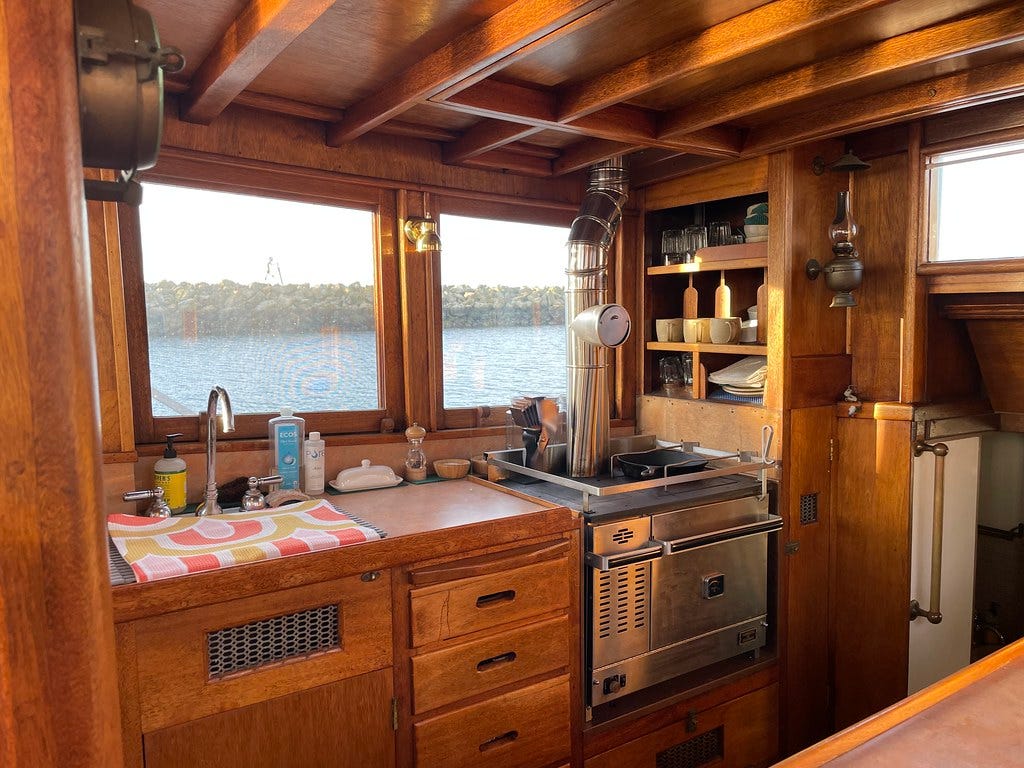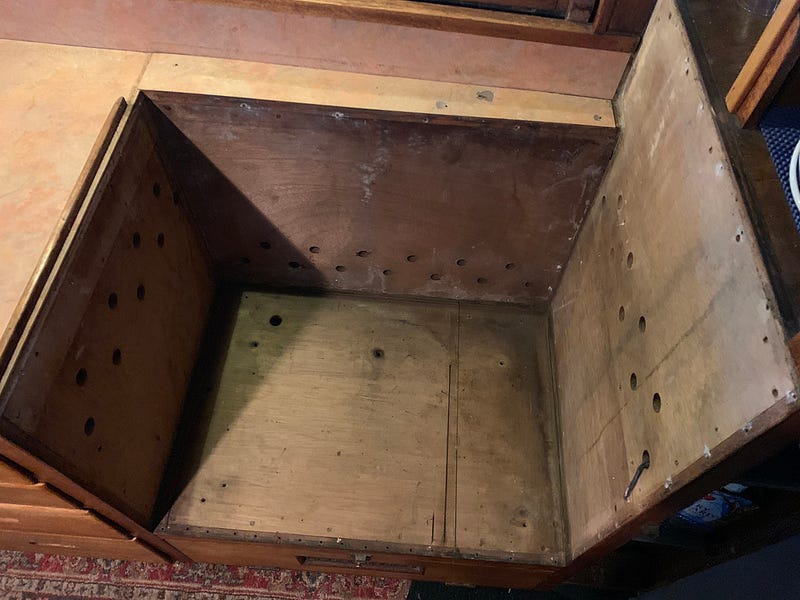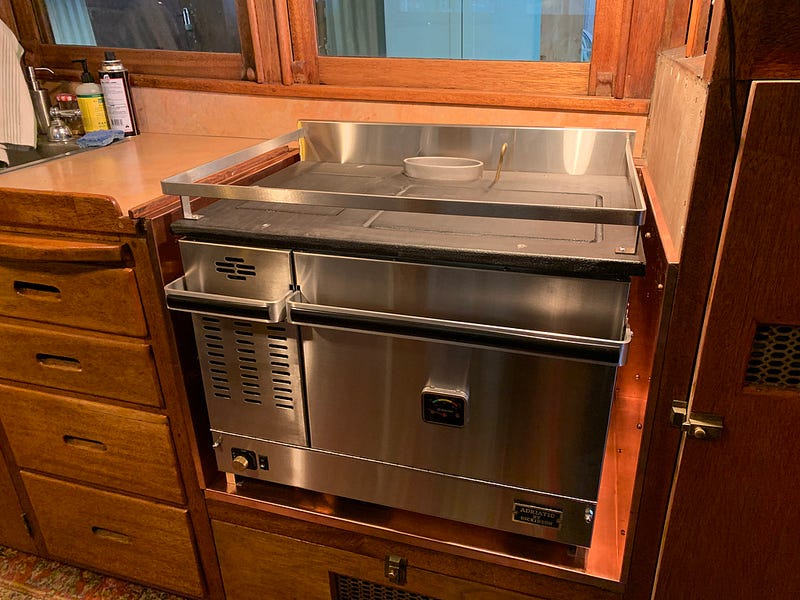Our boat, Skookum Maru, has been well cared-for, but as with any boat there is always something that needs doing. There is painting and varnishing to be done, or engine maintenance, or rewiring the light switch in the aft head that has never worked well (and still doesn’t - I really must get that done one of these days). So it was not entirely a surprise when in the fall of 2018, soon after we completed the refastening project, the hydronic diesel heater stopped working just as the weather started to turn cool.
A hydronic heater is a complicated little beast, with pumps, and hoses, and wires, and fans, and relays, and printed circuit boards. Very different from the simple diesel pot burner stove with which Skookum Maru had originally been equipped. I had never loved its complexity or the noise from the forced air exhaust so, when repeated attempts to resurrect it failed, we decided to replace the propane galley range with a diesel stove which would serve both for cooking and for heat
The first step in that project was to yank out the old propane stove in preparation for installation of a shiny, new, stainless steel Dickinson Adriatic diesel stove. That project went easily enough once I navigated past a bunch of stripped out square drive screws securing the cleats that were holding the stove in place. With the old stove removed, the counter cutout for the original diesel stove was revealed and it proved to be the perfect size for the new stove.
However the diesel stove, much like a wood stove, would require a heat shield to protect the wooden cabinetry. So I bent some copper sheet into something reasonably box-shaped, backed with a ceramic fiber insulating layer to cover the wood.
With that done I was able to set the stove in place…
…make a copper liner for the overhead…
…and install the stove pipe.
The final task was to wire up the draft fan and install the fuel lines, starting from the stove end of things with copper tubing running from the fuel meter on the stove down to a shutoff valve mounted in the cabinet underneath the stove, and then to a fuel filter, and then to fuel hose up to the day tank in a box on deck.
With the fuel lines done it was time to fire it up. I filled the tank with a couple of gallons of diesel that I brought up for the purpose, opened the shutoff valves (one at the tank and one at the stove), checked all of the connections for leaks (all good) and then went through the starting ritual that I recalled from my years of living with a similar stove aboard my old boat, Savona:
1. Open the metering valve to let in enough diesel to cover the bottom of the pot.
2. Turn on the draft fan about quarter-speed.
3. Twist and light a small piece of paper, and drop it in the pool of diesel.
4. Wait for the fuel to light and warm the burner up enough to sustain a clean burn.
5. ....
Well, step 5 is to adjust the fuel meter again once the flame is burning cleanly. But I didn't get to step 5 because as soon as the fuel in the burner started burning the cabin was immediately filled with great clouds of black smoke. Not good! I quickly shut everything off and opened up all the doors and windows to air out the boat. While I was waiting for the smoke to clear I decided to check my memory against the instructions from Dickinson. Had I made some mistake? But no - their instructions were pretty much what I had been doing for years. Hm. Ok, maybe I had just flooded the burner or something. Let's see if a second attempt is better.
Open the valve, turn on the fan, light the pool.... Black smoke everywhere again. Augh! Maybe I didn't have the fan on high enough? But no, turning the fan up just made the smoke worse. Wait... what? Turning the fan up makes the smoke worse... Turning the fan UP makes the smoke WORSE. Ah ha! I quickly swapped the electrical leads on the fan so that it would spin the correct direction and within seconds the smoke started heading up the chimney where it belonged, the air in the cabin cleared, and the stove started burning with the bright clean flame I remembered.
Ahhhh. Happiness. A diesel stove aboard is a wonderful thing in the cold, wet, Pacific Northwest winter.









Hi Christopher, Skookum Maru is a beautiful boat. I love the galley, very nautical but not yachty. Nicely done installing the diesel stove. I am curious to hear how well it heats the main house over the winter. Does it have the water heater coils and are you planning on adding hydronic heaters in places like the fore and aft cabins? Also, I am curious about the copper heat shield and overhead panel. The bends are very well made. Do you have a metal brake or did you have a metal shop make the bends? - George
Beautiful photos, worthy of a WB Magazine piece, but you know my ambivalence about the way WB goes about its mission, promoting an impossible esthetic. That said, I make exception/acceptance for the way the lovely Skookum Maru achieves the impossible.